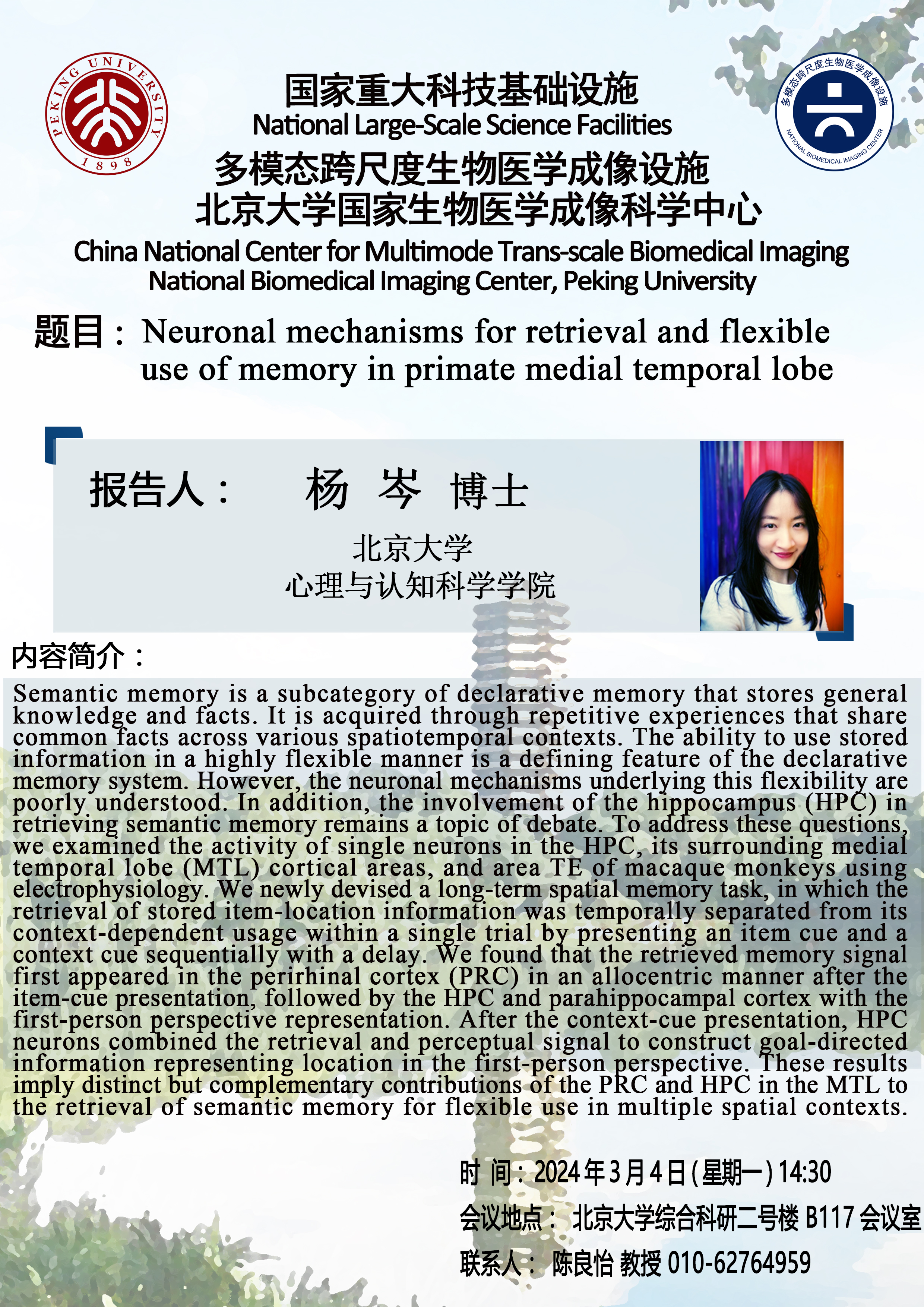
Speaker: Prof. Yang Cen, PKU
Time: 14:30 p.m., March 4, 2024, GMT+8
Venue: Room B117, Research Complex #2, PKU
Abstract:
Semantic memory is a subcategory of declarative memory that stores general knowledge and facts. It is acquired through repetitive experiences that share common facts across various spatiotemporal contexts. The ability to use stored information in a highly flexible manner is a defining feature of the declarative memory system. However, the neuronal mẹchanisms underlying this flexibility arepoorly understood. In addition, the involvement of the hippocampus (HPÇ) in retrieving semantic memory remains a topic of debate. To address these questions, we examined the activity of single neurons in the НРС, its surrounding medial temporal lobe (MTL) cortical ạreas, and area TE of macaque monkeys using electrophysiology. We newly devised a long-term spatial memory task, in which the retrieval of stored item-location information was temporally separated from its context-dependent usage within a single trial by presenting an item cue and a context cue sequentially with a delay. We found that the retrieved memory signal first appeared in the perirhinal cortex (PRC) in an allocentric manner after the item-cue presentation, followed by the НРС and parahippocampal cortex with the first-person perspective representation. After the context-cue presentation, НРСneurons combined the retrieval and perceptual signal to construct goal-directed information representing location in the first-person perspective. These results imply distinct but complementary contributions of the PRC and НРС in the MTL to the retrieval of semantic memory for flexible use in multiple spatial contexts.
Source: School of Life Sciences, PKU
